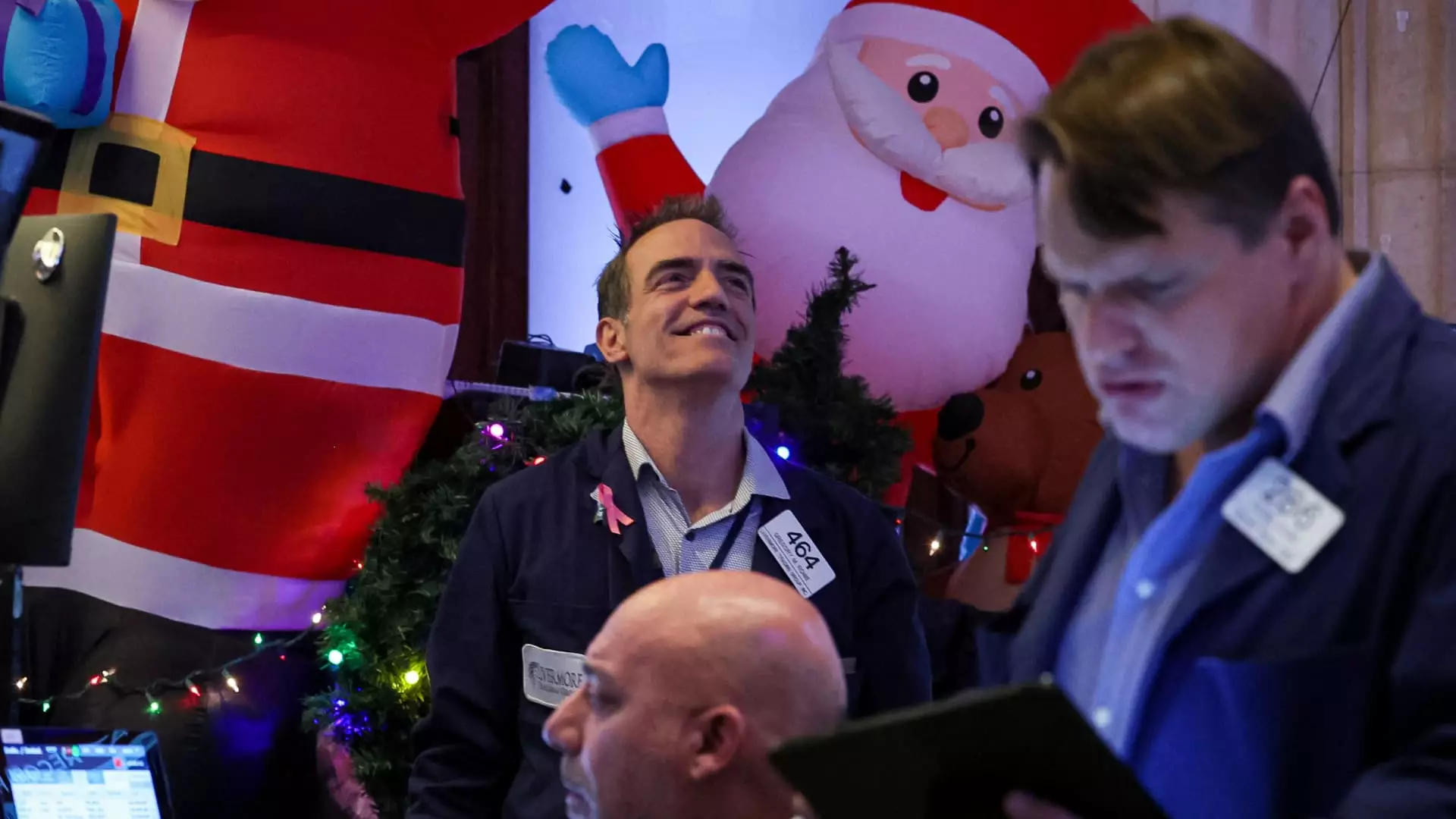As 2023 draws to a close, Wall Street is gearing up for what is known as the “Santa Claus Rally.” This phenomenon, coined by Yale Hirsch, the founder of the Stock Trader’s Almanac, refers to the gains typically seen in the final five trading days of the year and the first two days of the new year. Over the years, the S&P 500 has averaged a 1.3% increase during this period. It is a seasonally strong period for markets.
However, not all traders are convinced that a substantial rally will materialize this year. The dovish pivot from Federal Reserve Chair Jerome Powell earlier this month led to a significant run-up in stocks. Some traders worry that the market may have overextended itself. At present, the S&P 500 is very close to its all-time highs on both an intraday and closing basis. The index is just about 1% away from reaching these milestones.
Market experts, such as Jay Hatfield, the CEO at Infrastructure Capital Advisors, anticipate some technical resistance as stocks approach these record levels. Hatfield points to the recent market downturn as a sign of potential stall. The S&P 500 experienced its worst day since September, while the Dow and Nasdaq had their worst trading sessions since October. Hatfield believes that the market may stall around the 4,800 level and advises investors to be cautious. He even suggests taking a vacation during this time.
Despite concerns about a potential stall and skepticism surrounding the Santa Claus Rally, stocks are currently on an impressive winning streak. If the streak continues, it will mark the eighth consecutive week of gains for stocks. The last time the S&P 500 achieved such a winning streak was in 2017, and the Dow experienced this in 2019. Throughout the week, the S&P 500 has gained 0.7%, while the Dow has seen a 0.2% increase. The Nasdaq has outperformed with a gain of about 1.2%.
While the Santa Claus Rally generally occurs, the failure to see year-end gains can be a poor indicator for the coming year. Jeff Hirsch, the current editor of the Stock Trader’s Almanac, highlights that a lack of a Santa Claus Rally has often preceded bear markets or led to lower stock prices later in the year. He cites examples such as flat years in 1994, 2005, and 2015, as well as the bear markets of 2000 and 2008. If this year’s rally does not materialize, it could be cause for concern for investors heading into 2024.
Next week, Wall Street will receive a final slate of economic data points that could confirm the recent downward trend in inflation and a cooling economy. Traders will be closely watching the October FHFA Home Price Index and the S&P/Case-Shiller Home Price Index to gain insight into the housing market. Additionally, the November reading of wholesale inventories, a measure of unsold goods held by wholesalers, will be released. Overall, traders expect stocks to continue their upward trend, albeit at a slower pace. The recent gains have been strong, and unless there is an unforeseen shock to the market, a gradual drift higher is anticipated.
Traders should note that the upcoming week will be a holiday-shortened week, with markets closed on Monday for Christmas Day. Therefore, trading volume may be lighter than usual. Nonetheless, Wall Street remains optimistic about finishing the year strong and is hopeful for a positive end to an eventful year in the markets.
As 2023 nears its end, Wall Street is anticipating a strong finish with the possibility of a Santa Claus Rally. However, there is skepticism surrounding the rally, as some traders believe the market may have overextended itself. Technical resistance may come into play as stocks approach all-time highs. A lack of a Santa Claus Rally could also be a poor sign for the coming year. Nonetheless, stocks are currently experiencing an impressive winning streak. Economic data points next week will provide further insight into the state of the economy, and market expectations remain cautiously optimistic. With a light week of trading due to the holiday, Wall Street aims to wrap up the year on a positive note.

Leave a Reply